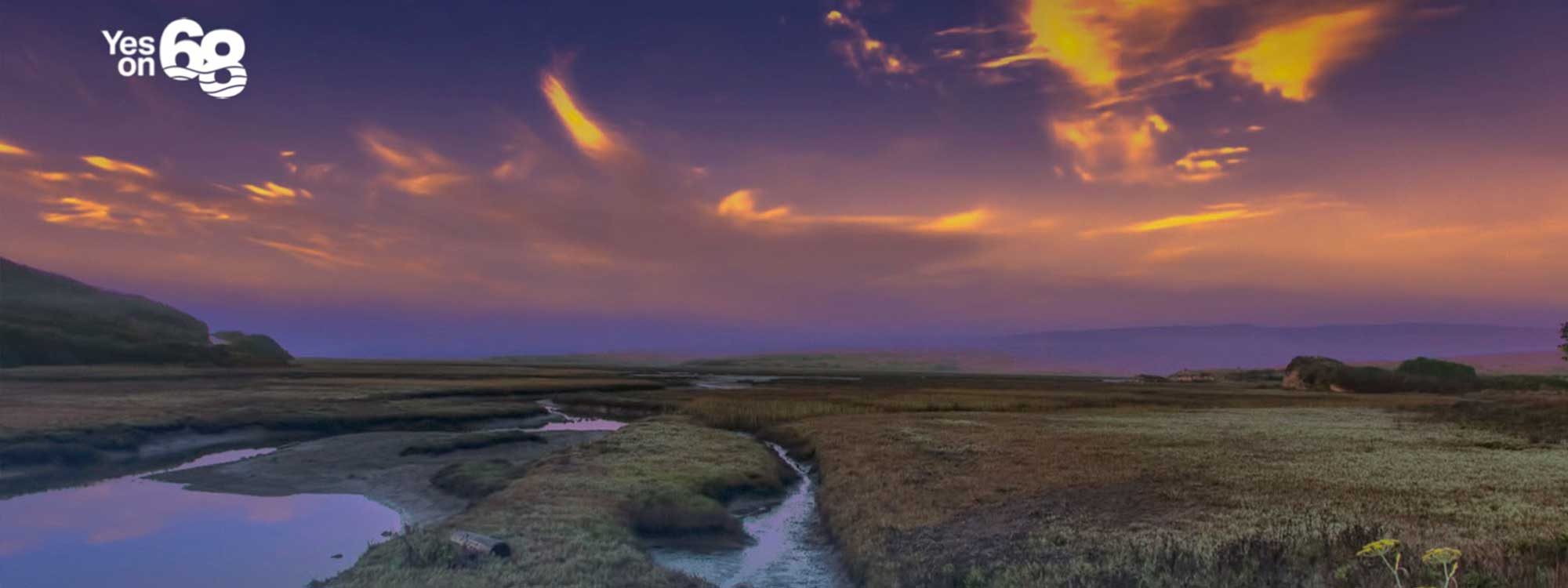Thanks to the hard work of the Proposition (Prop.) 68 campaign, Californians made history this past Election Day—June 5—as they voted overwhelmingly to support Prop. 68 and invest $4.1 billion in our state’s parks and natural resources.
Prop. 68 had broad-based, statewide support. 57% of all Californians, and 68% here in the Bay Area, voted yes on 68.
“The success of Prop. 68 at the polls is an enormous win for all Californians, a win for our natural resources and a win for our future,” Mike Sweeney, Executive Director of The Nature Conservancy in California.
This victory was largely the result of countless hours of work and combined collaborative efforts among many local, regional, and statewide partners. Greenbelt Alliance is proud to have been among this group, as we were an early endorser of Prop. 68 and served on the Bay Area Regional Task Force for the proposition as the Solano County Chair of the campaign.
Looking back, we compiled a list of the unique factors that truly made the Prop. 68 campaign a groundbreaking success and a joy to be a part of.
Statewide Collaboration Between Regional Coalitions
“[Prop. 68] will provide parks, green space, and water protection for all Californians, no matter what part of the state they live in, and no matter what their economic status,” Mary Creasman, California Director of Government Affairs for The Trust for Public Land.
While most voters saw Prop. 68 simply as a couple of words in advertisements, on the op-ed page of local papers, or as a paragraph description on the ballot, the life of the Proposition 68 campaign hinged on the incredible collaboration of groups all across the state, each with a deeply vested commitment to preserving and restoring our parks and open space throughout the state.
Early after the passage of Senate Bill 5, the California Clean Water and Safe Parks Act, the Prop. 68 campaign started off on the right foot by forming a statewide coalition of environmental groups from all areas of California who began regular communication and discussion of campaign strategy. This strong statewide base was then organized into regional task forces, each charged with mobilizing grassroots efforts in their area. The unity of the statewide and regional efforts was truly unique.
Here at Greenbelt Alliance, we are excited to be a part of these coalitions as we move into the future and look for new and different opportunities to collaborate on measures and other efforts to protect our state’s natural resources.
Increased Focus on Equity
“You can’t appreciate something that you don’t have access to. We always need more green space in urban areas,” Miguel Luna, Executive Director of the Los Angeles nonprofit Urban Semillas.
The demographics of California are changing rapidly and Prop. 68 is an important example of how the state is innovating to serve these new constituencies. Prop. 68 emphasized the need to focus on making parks and open space accessible to all Californians as it was the first ever statewide park bond bill to fund parks and water projects in more urban parts of the state, including areas that are primarily low-income communities or communities of color.
While funding from park bond bills has traditionally gone to remote areas, wealthier areas, or more racially homogenous parts of the state, Prop. 68 provides $725 million for safe parks in “park-poor neighborhoods” and 20% of all the spending benefits in the bill must benefit low-income communities. Further, there are provisions for community outreach in order to inform individuals of Prop. 68’s benefits. Money has also been set aside to help community groups and smaller nonprofits apply for grant funds they may otherwise lack the capacity or staff to access.
Access to parks and open space, and a growing appreciation of them is absolutely crucial to our ongoing effort to steward our state’s most valuable natural resources.
Strong Grassroots Efforts
The Prop. 68 campaign, including the statewide coalition and regional task forces, employed a range of traditional and innovative techniques to reach as many Californians as possible. Because of the depth and breadth of the member organizations, the regional task forces were able to reach residents at a truly localized level. They connected to communities across the state with traditional campaign methods such as direct mail, yard signs, phone banking, and tabling. This isn’t always the case with large statewide campaigns in California, a state with nearly 20 million registered voters!
The campaign also secured endorsements from organizations, newspapers, and elected officials from the local to state level. Important California newspapers such as the LA Times, San Francisco Chronicle, East Bay Times, San Jose Mercury News, Sacramento Bee, and many local papers, all endorsed Prop. 68’s goals of better parks, safer water, and improved climate resilience. Prop. 68 was also endorsed by high-profile statewide groups such as the CA Chamber of Commerce, the Sierra Club, and the Democratic and Green parties; labor organizations including the SEIU, the California Labor Federation, and the California Federation of Teachers; as well as the League of Conservation Voters and the California Public Interest Research Group (CALPIRG).
Continually engaging with and mobilizing not just the environmental community but all those who appreciate our state’s natural resources is a crucial part of efforts to secure investment in our shared future.
What’s Next?
Thanks to all who supported the Prop. 68 campaign in any way! We did it!
If you want to stay in the loop about how Prop. 68 funds are allocated and the impact they’re making, follow the Greenbelt Alliance blog. We’ll be tracking how this $4.1 billion windfall is spent, and will give regular updates on the extraordinary impact it’s having in the Bay Area and across our state.
This post was co-written by Solano County Representative Amy Hartman and Intern Agnes Lo.
Photo: The Yes on Proposition 68 Campaign




